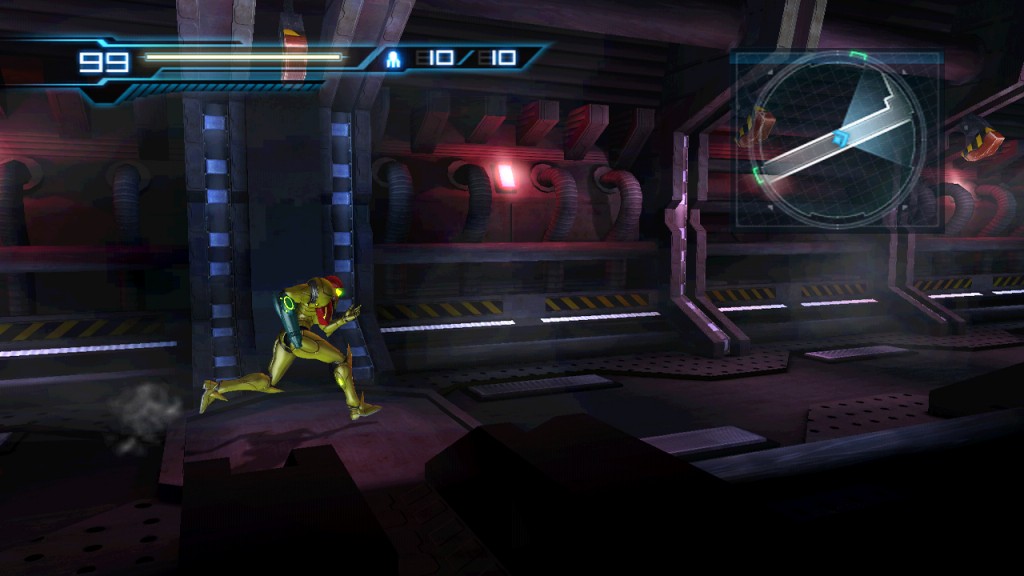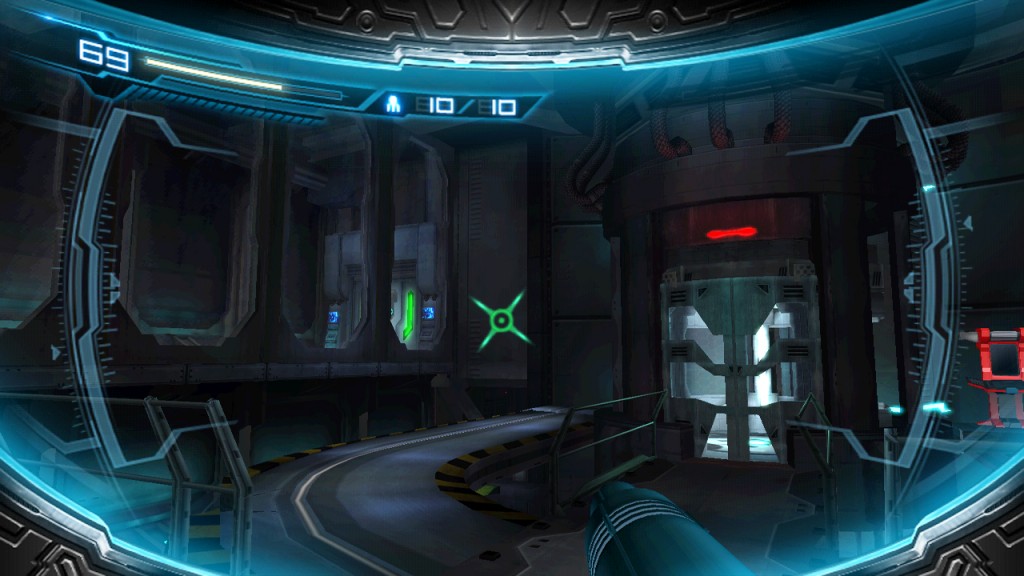I recently got a chance to try out “Metroid: Other M,” one the linchpins of Nintendo’s late spring/early summer games lineup. The game, a collaboration between series creator Yoshio Sakamoto and his team at Nintendo and Tecmo’s Team Ninja, is both a return to the “Metroid” series roots and a radical departure. As a fan of the old school “Metroid” and “Super Metroid,” as well as Team Ninja’s modern “Ninja Gaiden” games, I was excited to give this collaboration a try.
When my time with the game ended, however, I felt somewhat let down, as if I’d been playing the game wrong. Before I get to how the game handled, though, some background is in order. “Metroid: Other M” picks up where 1994’s “Super Metroid” left off. Actually, that game’s final battle serves as an intro movie in “Other M.” (Note to the game industry: Please re-create more of my favorite classic gaming memories as cutscenes in modern sequels.)
From that opening cutscene, I followed Samus Aran, the series’ heroine, back to a space station, where she recuperated from the traumatic events of the “Super Metroid” finale, giving me an opportunity to get a tutorial in the game’s controls before being funneled into the first mission, an investigation of a seemingly derelict spaceship that would have looked right at home in dozens of well-made sci-fi movies and video games.

The most enjoyable parts of the game were the third-person, actiony bits.
“Metroid: Other M,” which will probably be rated T and is due out at the end of June, takes some risks with its gameplay, and I’m not convinced they’ll all pan out. Even though much of the game is set in 3D environments, you’ll spend most of your time holding the Wii remote, the only controller you’ll use in the game, on its side like a NES controller. It’s in these moments where the demo shone brightest. The game looked like a well-made, modern Wii game, but the gameplay was pure NES. The only controls worth worrying about were the directional pad and a couple of buttons.
Not surprisingly, these parts of the game reminded me a lot of the NES “Ninja Gaiden” games. I was quickly at home running and jumping all over the place, blasting bad guys and generally having a good time. My only complaint is that all my time logged playing “Ninja Gaiden” games made me long for a sword or some other short-range method of disposing of my enemies, rather than Samus’ gun.

I flipped into this first-person view way more often than I should have.
But there’s another element to “Other M’s” controls. At any time, you can point the Wii remote at your TV screen to have a look around the environment. It’s important to note that you can’t move in this mode, although it’s useful in combat for firing missiles. The first-person camera becomes important, though, as some rooms will have passages, hidden doors or clues that aren’t visible in the third-person, fixed-camera view.
The third-person/first-person duality ended up being both a blessing and a curse. On the one hand, it seems like it has the potential to allow for some fairly inventive puzzles. However, it also totally frustrated my completionist self, who normally likes to scour every last corner of every game I play so that I don’t miss a single detail.
You can probably see where this is going. While playing “Other M,” I found myself constantly having to fight the urge to stop and look around for hidden doo-dads and clues. The way the game, or at least the part I played, is designed posed a couple of problems. First, your inability to move your feet while in first-person mode makes exploration take much longer than it should. Second, the level I played was poorly served by my close examination. More than a couple of times, I found myself running down long, empty corridors, or standing in a largely empty room. When I stopped to look around — surprise — I was in an empty corridor, or a big, boring room bursting with nothing.
During the demo I encountered a few spots that made me realize that the exploration and puzzle-solving aspects of the game could be plenty fun when I got to them, but if “Metroid: Other M’s” developers want to make a game where it’s possible to spend a lot of time standing around looking at stuff, there needs to be more stuff to look at.
As far as the game’s story, it’s clear Sakamoto and company plan to spend more time weaving “Other M’s” story and developing Samus’ character than past “Metroid” titles. Maybe it’s because I last finished a “Metroid” game as a teenager, but I couldn’t recall a single bit of Samus’ backstory, other than that she’s a woman and a bounty hunter. The demo, which featured Samus thinking out loud as well as run-ins with characters from her past, hinted at a lot more exposition to come. While the in-game movies looked fantastic, though, the voice acting sounded a little flat and lifeless. Hopefully the whole package will be a little livelier when the game lands in stores on June 27.
